Symbiosis
(a close, prolonged association between different organisms of different species that may benefit each member; commensalism; mutualism)
Examples of symbiosis in action
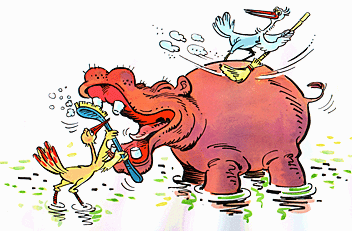
One version of symbiosis is the relationship of certain birds and hippopotami. In this relationship, the birds are well known for preying on parasites that feed on each hippopotamus which are potentially harmful for the animal.
To that end, this hippopotamus openly invites the birds to hunt on its body, even going so far as to open its jaws to allow the birds to enter the mouth safely to hunt.
For the birds' part, this relationship not only is a ready source of food, but a safe one considering that few predators would dare strike at the bird at such close proximity to its host.
Commensalism: where one partner lives with the other with no obvious effect on the second.
Commensalism is a type of symbiosis where two (or more) organisms from different species live in close proximity to one another, in which one member is unaffected by the relationship and the other benefits from it.
In the ocean, commensalism is represented in the coral reefs, where shrimp live within the stinging tentacles of the sea anemone. Since the shrimp are not affected by the anemone's poison, they are protected from their predators that cannot tolerate the anemone's sting.
Another form of symbiosis is mutualism. This is shown when clownfish benefit from living within the stinging tentacles of sea anemone. At the same time, however, the clownfish help the sea anemone by chasing away the anemone-eating fish.
Would you agree that the following images illustrate a symbiotic situation which may be interpreted as commensalism?
Bereaved by the forces of nature and discovered by wildlife rangers near certain death in the Indian Ocean off Malindi, the one-year-old male hippo calf dubbed Owen was placed on December 27, 2004, in Haller Park, a wildlife sanctuary in the coastal city of Mombassa, Kenya.
As soon as he was placed in his enclosure, the orphaned youngster immediately ran over to the giant tortoise who is also housed in that area. The tortoise, named Mzee (Swahili for "old man") and estimated to be between 100 and 130 years old, was not immediately attracted to the brash newcomer. In fact, he turned and hissed, forcing the hippo to back away. Yet, Owen persisted in following the tortoise around the park (and even into a pool), and within days the pair had forged a friendship, eating and sleeping together. Owen has even been seen to lick the tortoise, whom he apparently regards as his new mother.
The one-year-old hippo calf, named Owen, was found alone and dehydrated by wildlife rangers near the Indian Ocean. According to a park official, they sleep together, eat together and "have become inseparable".


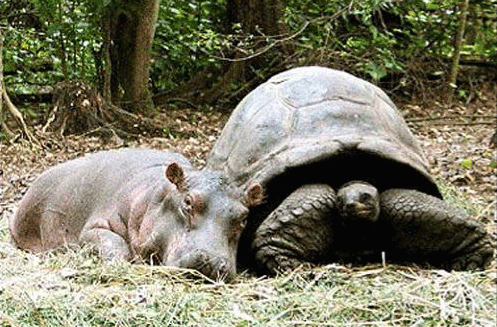
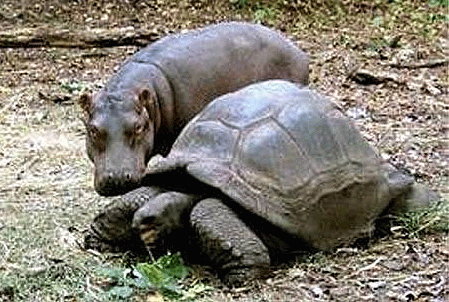
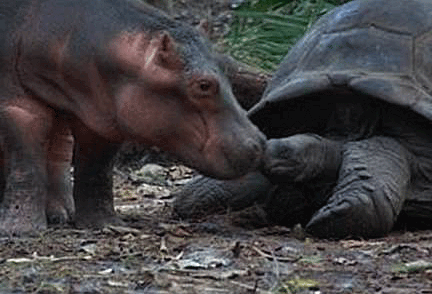
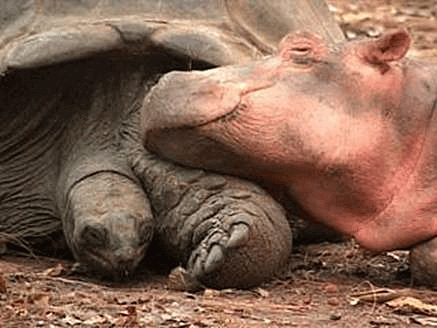
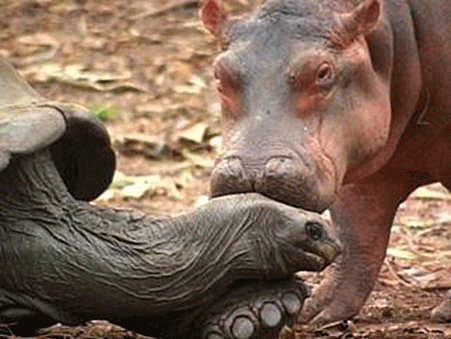
![]() Word unit about other sym-, syn- elements.
Word unit about other sym-, syn- elements.
![]() The unit of bio- words.
The unit of bio- words.
